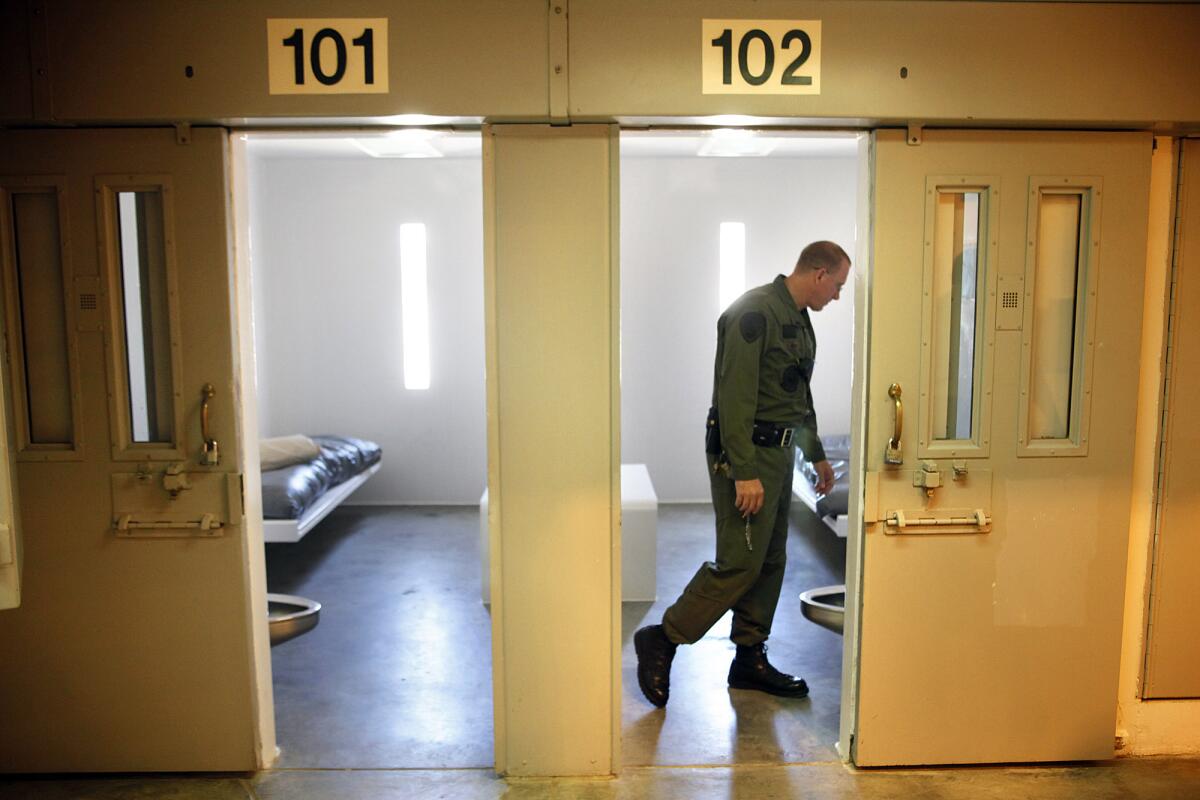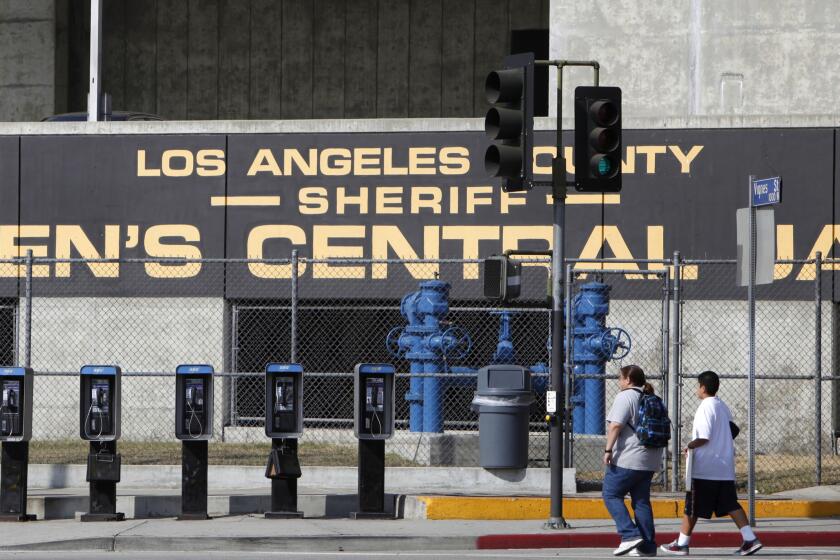California prison guards on track for $1 billion in perks and raises

- Share via
California prison guards are on track to get more than $1 billion in raises, perks and benefits over the next three years as part of a tentative contract that includes $10,000 bonuses at three hard-to-staff units.
The deal with the California Correctional Peace Officers Assn. — the union for roughly 26,000 correctional workers — comes as the state has downsized its prison system by closing two facilities and making plans to empty out at least two more.
Despite the decreasing number of prisoners and prisons, the California Department of Corrections and Rehabilitation said the hope is that retention bonuses will help solve the staffing struggle.
“We are experiencing challenges in recruitment similar to other law enforcement agencies,” prison spokeswoman Mary Xjimenez told The Times. “Our recruitment efforts are extensive and ongoing, with retention bonuses being part of our overall efforts.”
But a report published Tuesday by the California Legislative Analyst’s Office raised concerns about some portions of the proposed agreement, and said data do not clearly support the claim that the state has had any serious problems attracting staff.
Glen Stailey, the union’s president, did not directly respond to an inquiry about the state analysis, but said that “contract discussions are going smoothly.”
“We have reached a tentative agreement that will first go through our internal process before we comment publicly about the substance of it,” he said.
A federal appeals court rejected the state’s bid to toss out a lawsuit filed on behalf of a California prison guard killed three years ago by COVID-19.
The union has to formally approve the contract to make it final, as do the Legislature and the governor. The state Senate budget committee already approved it last week
Gov. Gavin Newsom’s office, which was responsible for the negotiations that led to the tentative agreement now on the table, referred questions to the state’s Department of Human Resources, which said it does not comment on pending labor negotiations.
Aside from offering $10,000 bonuses to staff at three units — Salinas Valley State Prison in Monterey County, California State Prison in Sacramento and R.J. Donovan Correctional Facility in San Diego — the tentative contract would also include $5,000 payments for new workers who relocate or commute more than 50 miles to work at any of 13 targeted facilities.
The agreement, first reported by CalMatters, also includes a 3% salary hike both this year and next, which will cost the state an additional $259 million each year. Some workers could get $100 more per month for having a college degree or speaking a second language, or $200 per month for having a commercial driver’s license.
Other perks include two $1,200 payments to support employee health and well-being, and a new employer-funded 401(k) plan in addition to the existing pension plan.
Though the two-year agreement would take effect retroactively beginning last month, the state’s $1-billion cost estimate is spread out over a three-year period to account for spending that would extend beyond the life of the contract.
The proposal comes months after the California Department of Human Resources released its 2022 pay study, which found that prison employees across the state earn about 23% less than jail deputies in California’s six largest sheriff’s departments.
But Tuesday’s assessment from the Legislative Analyst’s Office, the state’s nonpartisan fiscal advisor, pushed back on that finding, saying the analysis was based on “flawed methodology.”
The analysis found that the pay study didn’t take into account overtime earnings that made up roughly 24% of prison workers’ gross regular pay last year. And the six sheriff’s departments that served as points of comparison were “not representative” because they were all in large counties with particularly high costs of living.
“More than 50 percent of state correctional officers are employed in lower-cost inland areas,” the report said. It recommended that the Legislature “not use this study to evaluate whether or not the state’s compensation for correctional officers is appropriate.”
L.A. County supervisors vote unanimously to give the Sheriff’s Department four months to stop charging inmates and their families for phone calls.
The report also challenged the idea that the state’s prisons are having problems recruiting and retaining corrections officers. Despite a recent increase, data showed, the corrections department’s vacancy rate is still lower today than it was a decade ago, decreasing from 14.5% in January 2014 to 12.9% in July 2023. And from 2013 through last year, the report said, the prison system turned away more than 90% of qualified applicants.
“The high level of interest in the job despite its challenging working conditions likely reflects that, compared with other jobs that have similar education requirements, the state provides correctional officers competitive salaries and benefits as well as job security,” the report said, noting that it appeared turnover had increased slightly over the past few years.
The report also raised concerns about some details of the contract, noting that the $1,200 health and well-being payments — estimated to cost around $59 million total — do not include any requirement that the money be used for that purpose.
Additionally, the report said, the creation of an employer-funded 401(k) plan would reflect a major policy shift, expanding the retirement benefits beyond what is already “among the most generous pensions” for state employees.
Aside from financial concerns, the analyst’s office criticized the Newsom administration’s last-minute delivery of contract proposals for several bargaining units. The governor’s office gave budget committees “only three days to review thousands of pages of documents” before needing to plan hearings, the report said.
Prison reform advocates have criticized the high-priced proposal, too. Alesha Monteiro, the statewide policy coordinator for Californians United for a Responsible Budget, a coalition focused on shifting spending away from police and prisons, said the prison guard union “wields outsized political power” compared to other other labor groups.
“It’s disheartening to hear about guards receiving bonuses while stories of mistreatment, abuse and neglect within California prisons regularly surface,” Monteiro said. “All the while other state employees continue to face financial struggles and fight over the crumbs CDCR leaves behind.”
More to Read
Sign up for Essential California
The most important California stories and recommendations in your inbox every morning.
You may occasionally receive promotional content from the Los Angeles Times.
















